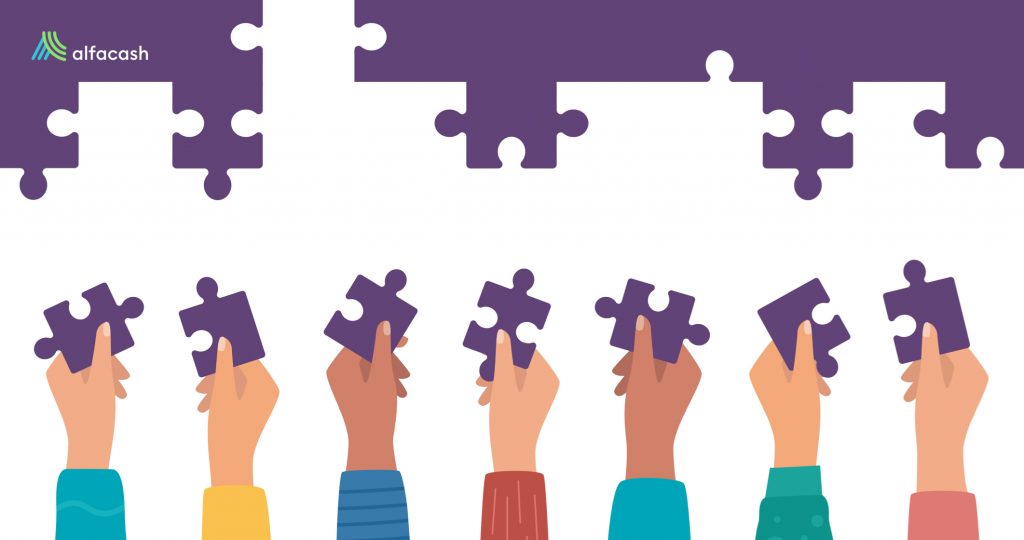DAOs are organizations that are becoming increasingly important and are essential for the future of the web3. In this article, we will tell you what DAOs are and how they can revolutionize cooperation systems around the world.
DAOs: transparency, autonomy, and decentralization
Imagine a store that sells pet supplies. It belongs to people scattered around the world, unknown to each other, and not related under a hierarchical scheme.
Its main objective is to generate profits and allocate part of them to help animals in need. How do they trust each other? How do they manage the funds and decide how to spend and invest them?
DAOs were created to automate these processes and expand the possibilities to organizations. DAO stands for Decentralized Autonomous Organization. As its name implies, these organizations operate without any central authority. Thanks to スマートコントラクト, they are organic, immutable, transparent, and bureaucratic-free.
Its design ends the need for a trusted third party in transactions (such as banks or accounting entities). Let’s go back to our supplies store to exemplify what DAOs are.
The store does not need any vendors to function. It can replenish its stock automatically, share profits among its members, and donate to charities regularly. It is also capable of paying for services automatically.
Additionally, its members have a voice and a vote as they invest in the store, so any change in its operation only can be done by its member’s approval. No single individual can affect the set of rules established by the DAO. The code, proposals, treasure, and votes can be audited at any given time. Due to everything is being registered on the ブロックチェーン.
How are the DAOs composed?
A DAO has four elements that allow its operation: smart contracts, consensus protocol, tokens, and blockchain.
Smart contracts
Smart contracts define the rules that allow automatically run operations. The contracts programming is what determines the functions of the DAO and complexity. Smart contracts operations are public and auditable.
Consensus protocol
The primary goal of DAOs is to achieve better coordination through collective ownership. The people that are organized in a DAO all share a common goal. The DAO maintains the efforts coordinated toward that goal, thanks to democratic decision-making.
Therefore, DAOs need a consensus protocol to work. This protocol makes sure that any decision made by the DAO is the product of a vote. For example, no one could spend the treasury money without the group first approving the transaction.
Exchange medium and governance token
DAOs belong to the Decentralized Finance (DeFi) category, so they need to have means of exchange. To do this, some DAOs make use of their token, while others exchanges with existing tokens. This crypto allows DAO members to have the power to vote and also works as an economic reward.
Let’s go back to December 2021 to see an example of how the governance token of a DAO works. A MakerDAO member, one of the biggest DAOs, accidentally called the burn function on the DAI.sol on Optimism, burning 10,000,000 DAI.
If it had been a blockchain like Bitcoin, the user would have lost the funds permanently. Instead, 15 days after the incident, it was requested to return the funds, starting a vote. Out of 85K MKR involved, 58k voted yes. MKR is Maker’s governance token, with which members can vote. DAI is their stable cryptocurrency.
The role of the Blockchain in DAOs
The fourth element that allows a DAO to function is the blockchain. The blockchain is responsible for recording everything that happens in the DAO, which does not only include cryptocurrencies but also property titles or even events.
In this sense, DAOs can work for almost anything that requires coordination and transparency. An autonomous store, a club, a guild, a venture fund, and even a country that control its government under the DAO scheme.
That is why DAOs have become so popular in the last few years. According to data from DeepDAO, this March 2022, there are some 4,832 active DAOs with a total treasury of USD 10.4 Billion. Uniswap stands out with USD 2.2 billion in treasury, followed by BitDAO (USD 2 billion) and Lido (719.2 million).
What are the risks of DAO?
However, not everything is rosy when it comes to DAO. Its biggest strength may also be its biggest weakness: smart contracts. もしも the smart contract that establishes the rules of the DAO is not strong enough, then it will be vulnerable to malicious attacks.
The most famous example of this is The DAO of Ethereum. It was an investor-led venture capital fund, as well as a DAO. Founded in 2016 as the biggest crowdfunding campaign ever recorded, collecting USD 100 million in ETH in 15 days.
A vulnerability in their code allowed $50 million worth of ETH to end up in a hacker’s hands, and so the Ethereum developers decided to fork the network. On Ethereum, most of the funds were restored. In the new chain (Ethereum Classic) the transaction with the stolen funds was registered.
What is DAO’s future?
A German professor named Werner Dilger laid the foundations of the Decentralized Autonomous Organization. In 1997, Dilger presented the work entitled Decentralized autonomous organization of the intelligent home according to the principle of the immune system in which he described the autonomy of these organizations. With the technology available at the time, it was impossible to put it into practice.
Bitcoin developers rediscovered this topic in 2013 under the name Decentralized Autonomous Corporation (DAC). In 2015, the release of Ethereum as a Turing complete machine would finally allow its development and implementation.
If developing a DAO depends only on its smart contracts, then DAOs in the future could be used for almost anything And if we consider that blockchain programmability is constantly improving, then the potential of such organizations is unimaginable.
Wanna trade ETH, DAI, and other crypto? You can do it safely Alfacashで! And don’t forget we’re talking about this and a lot of other things on our social media.
